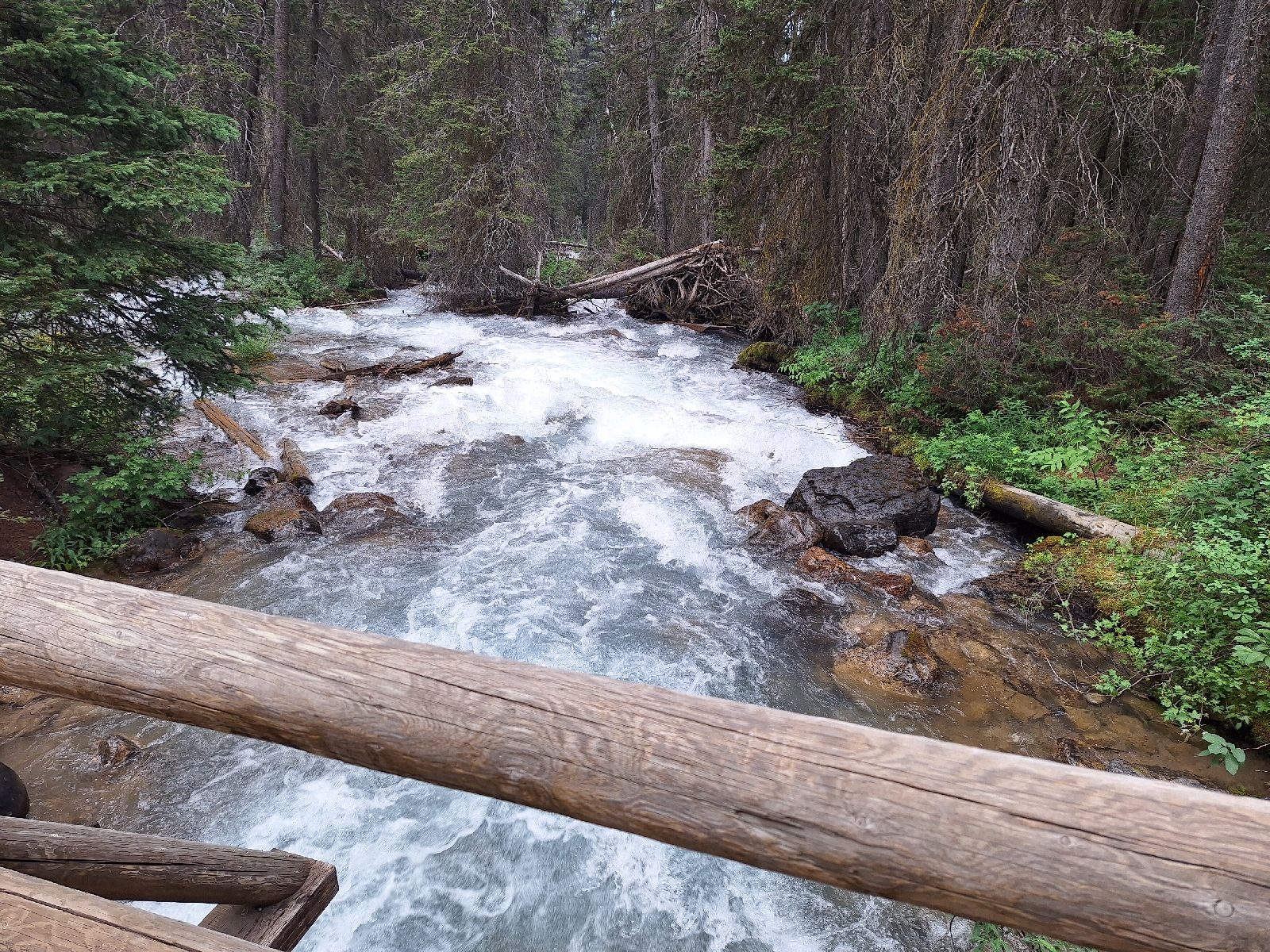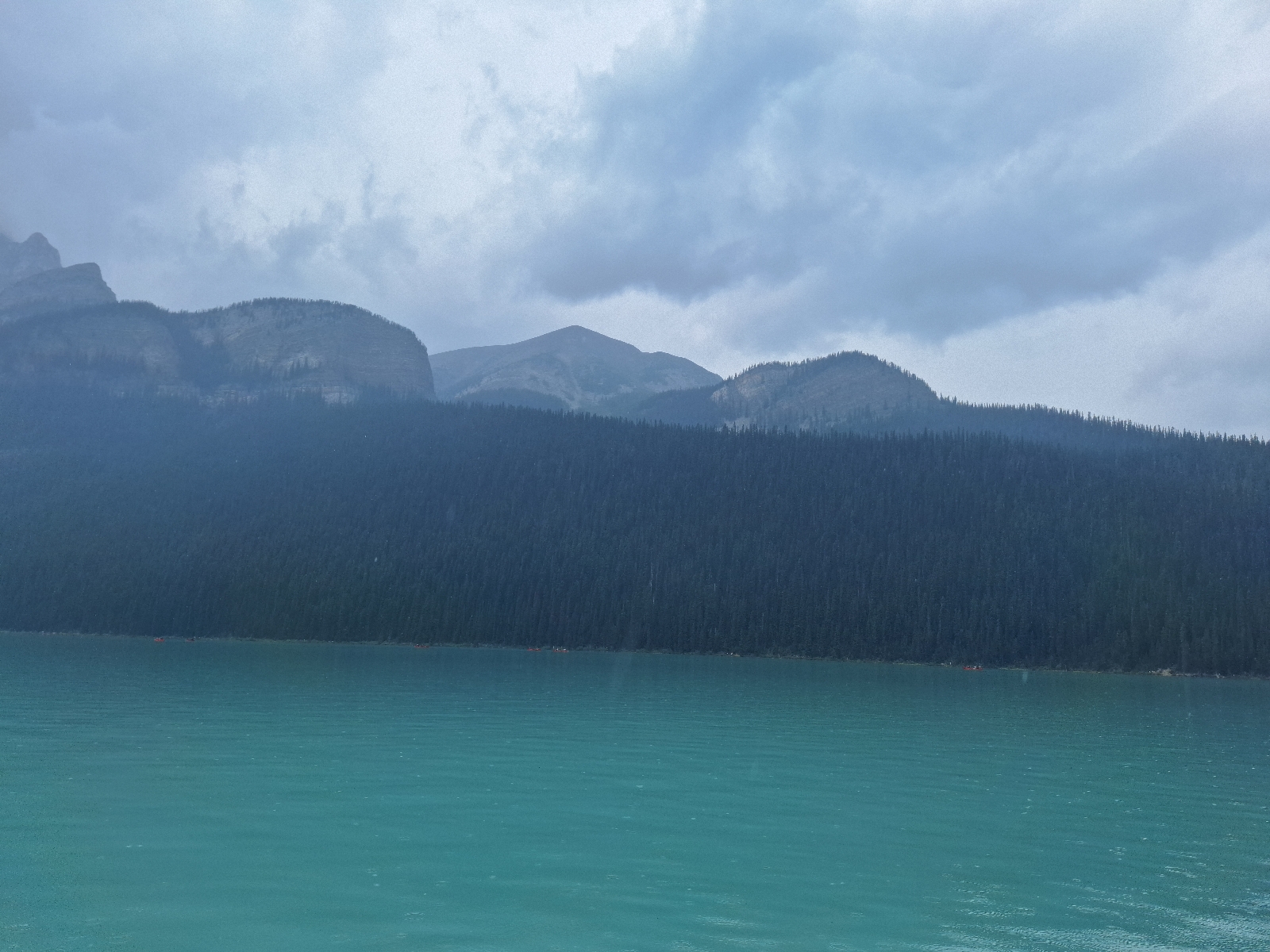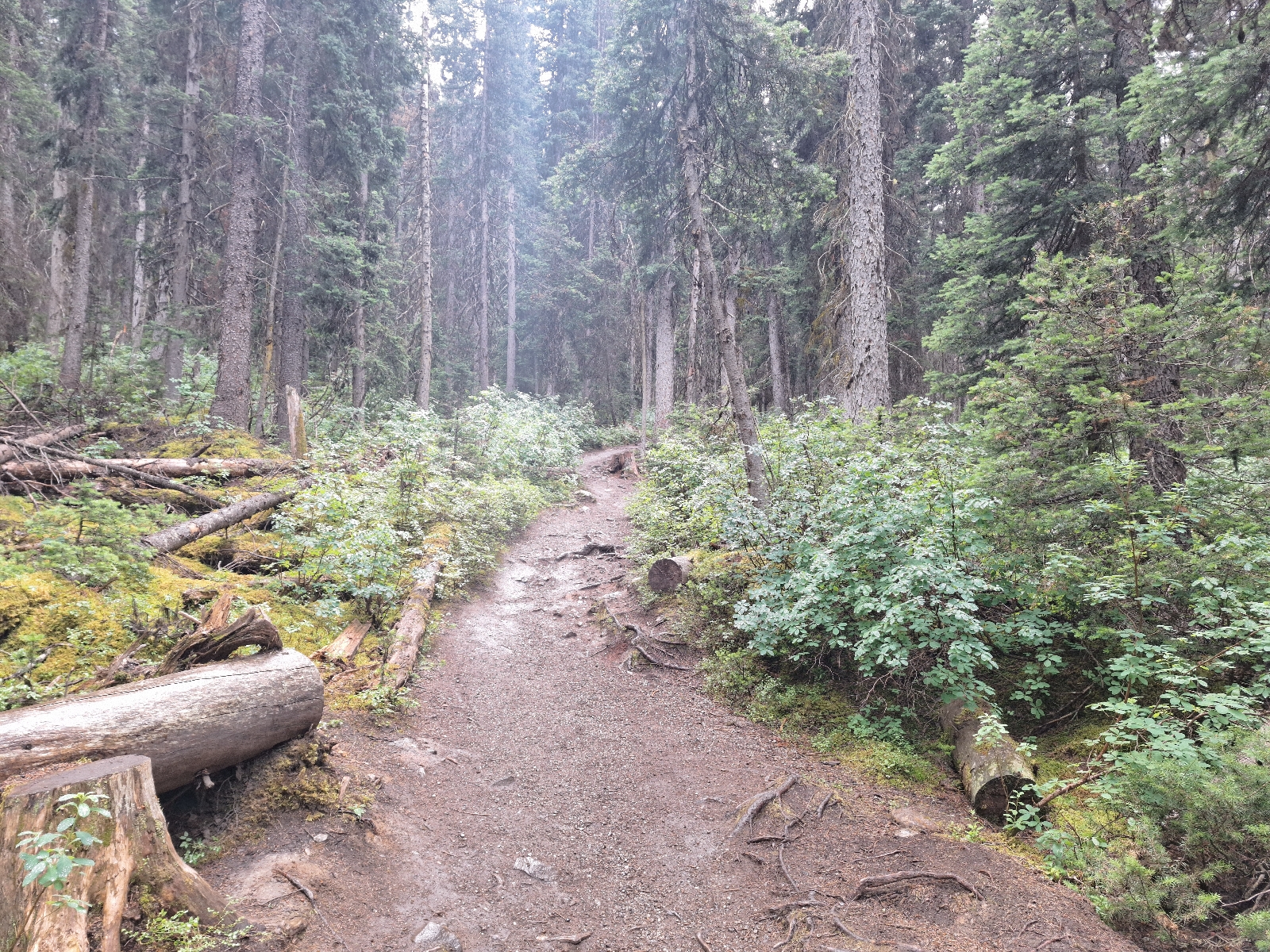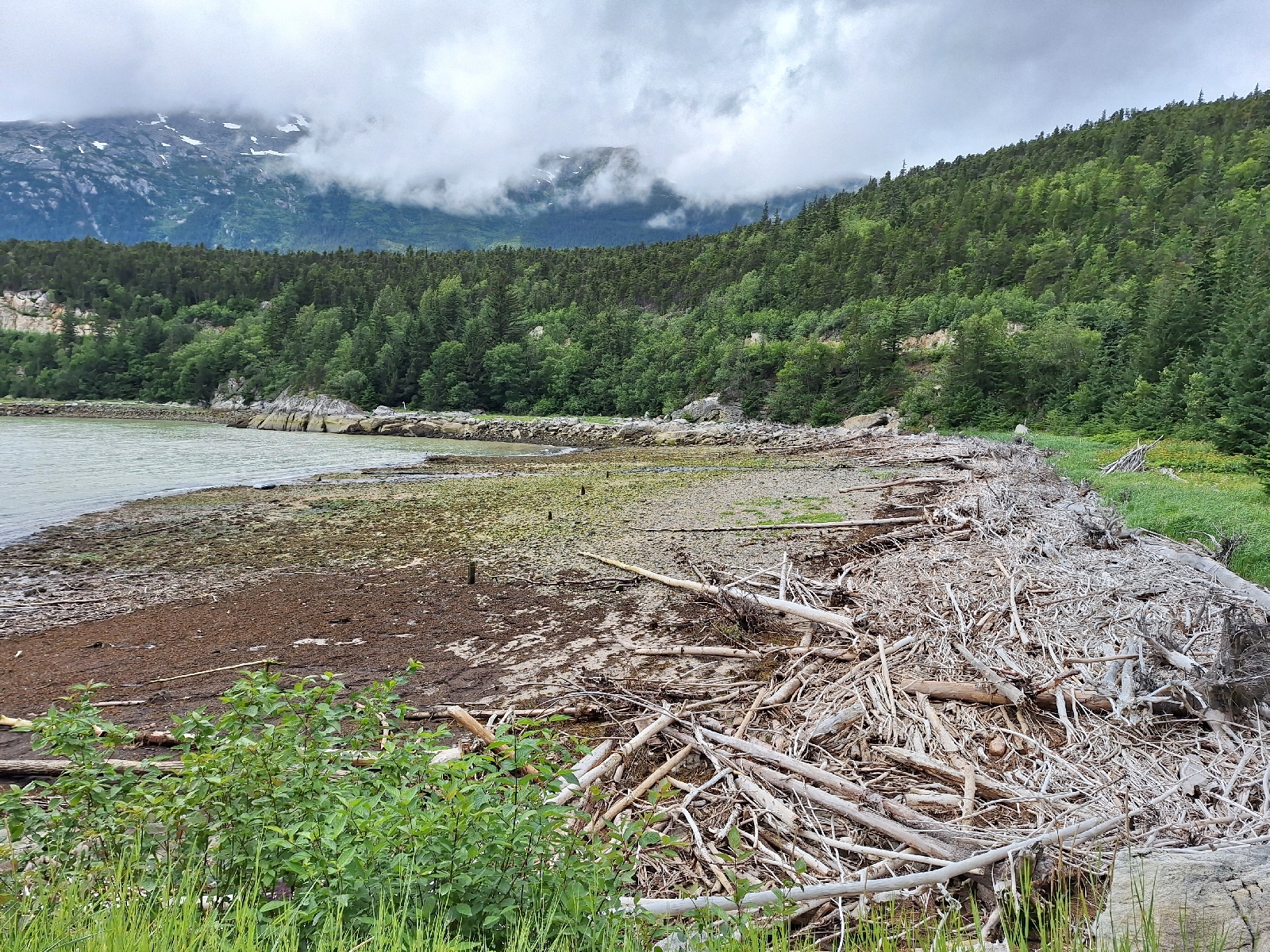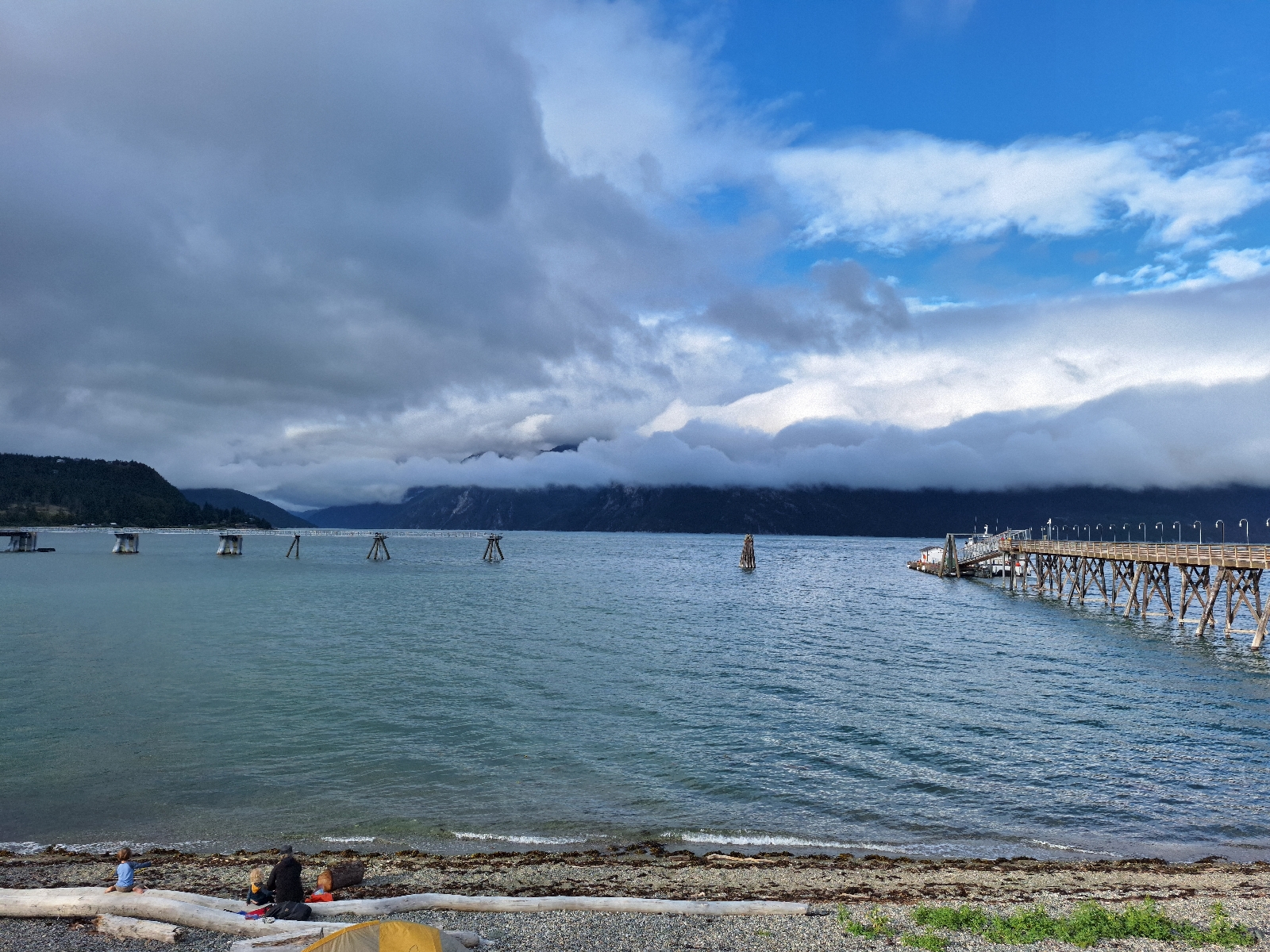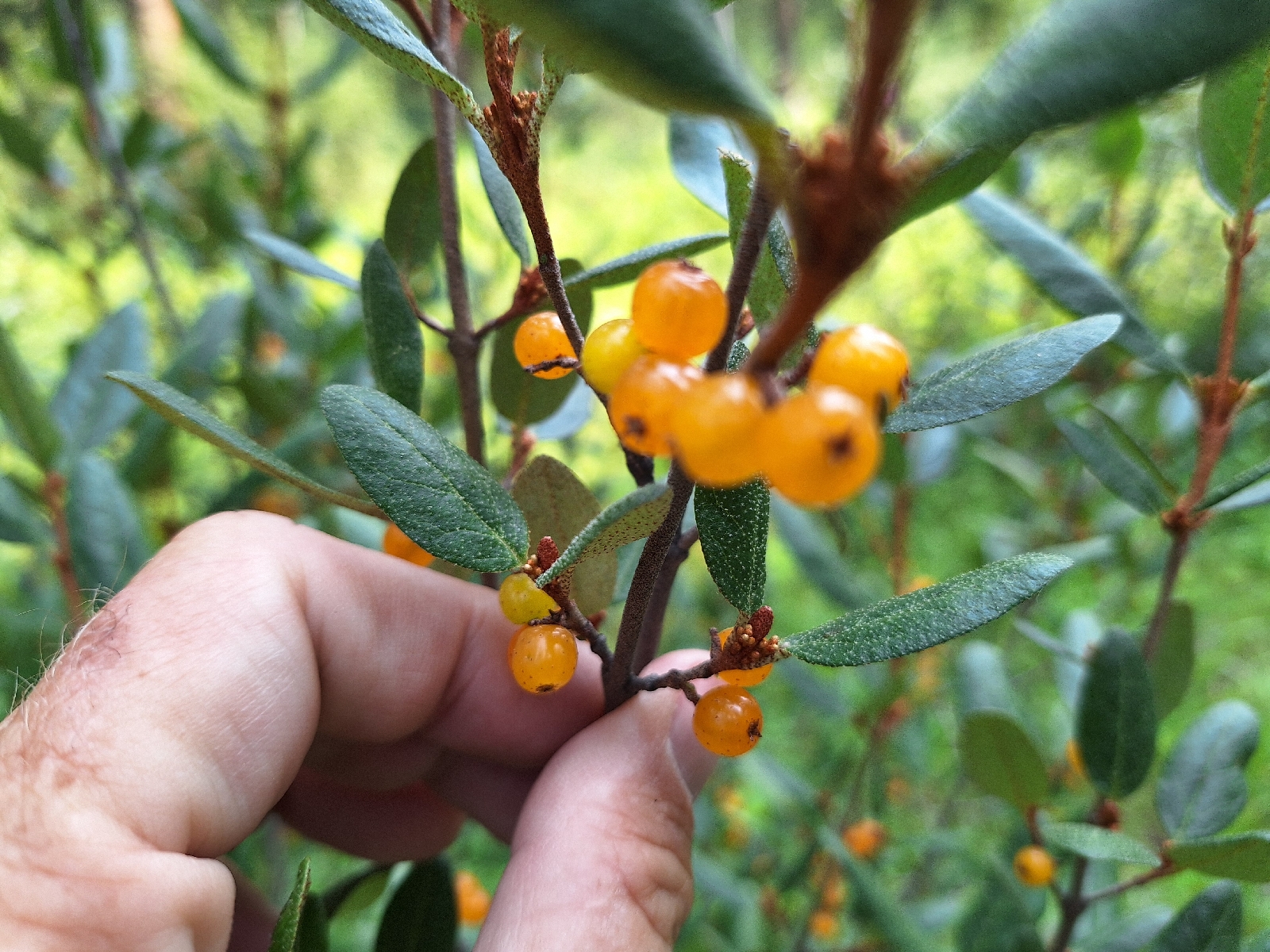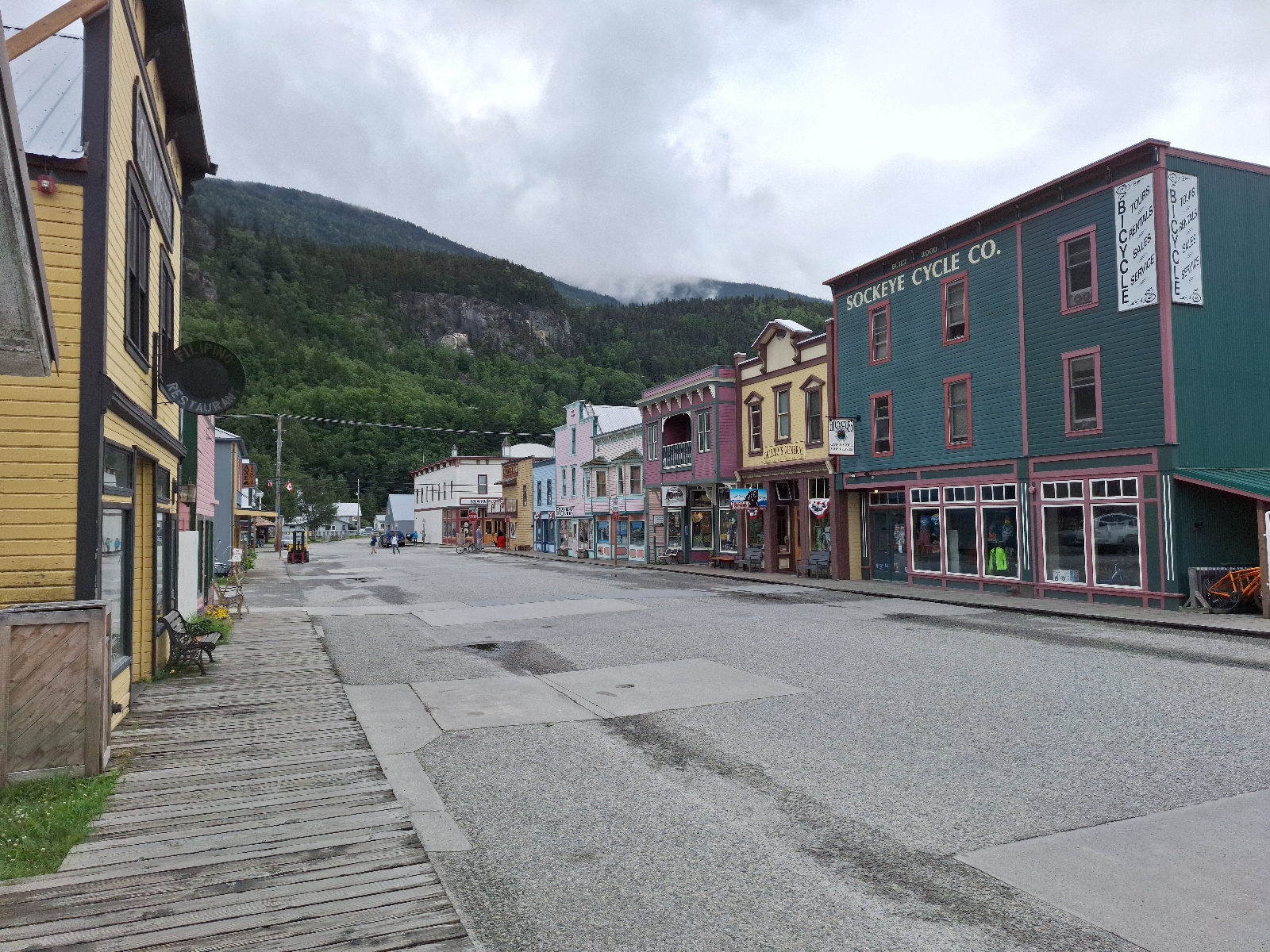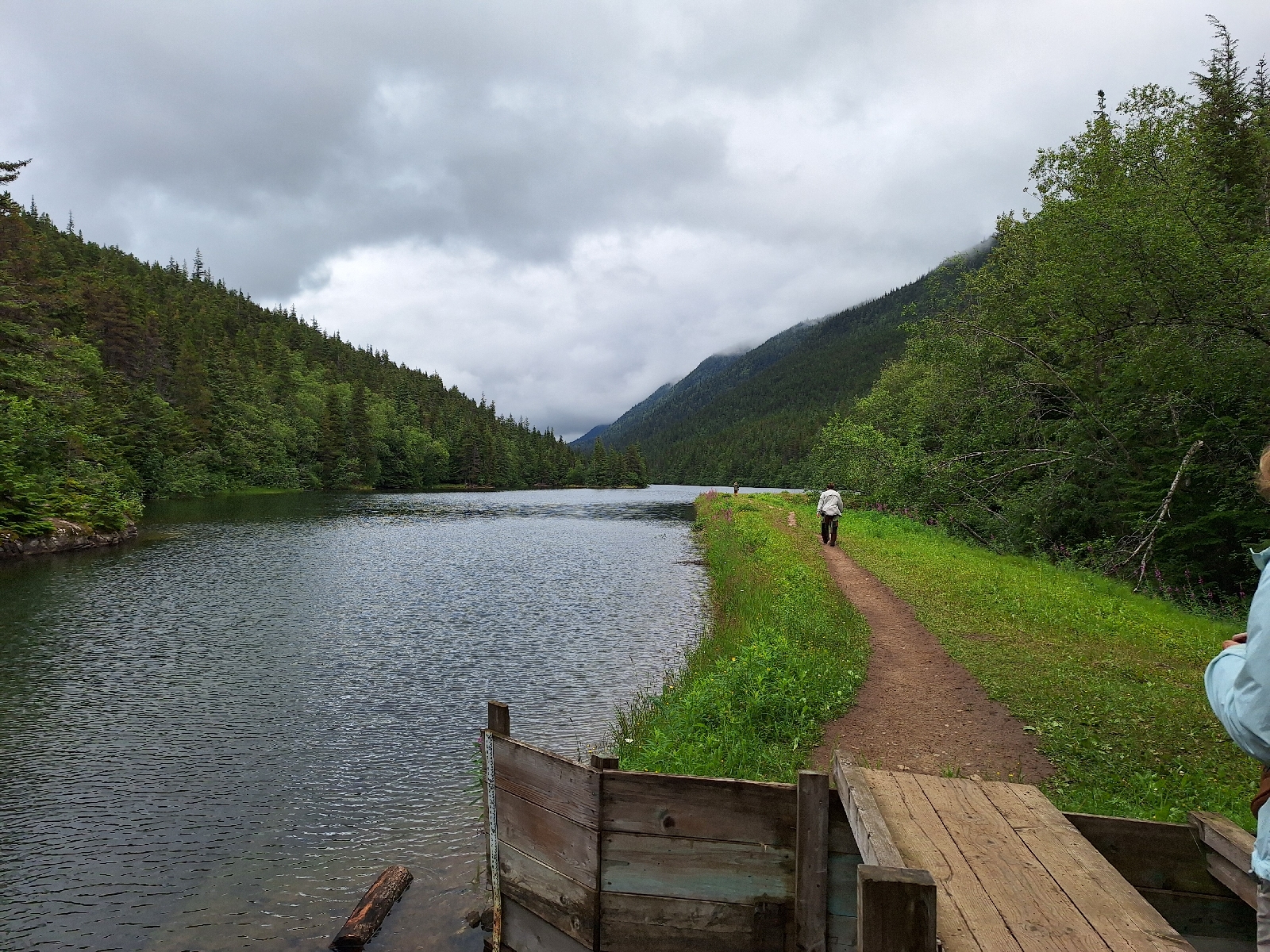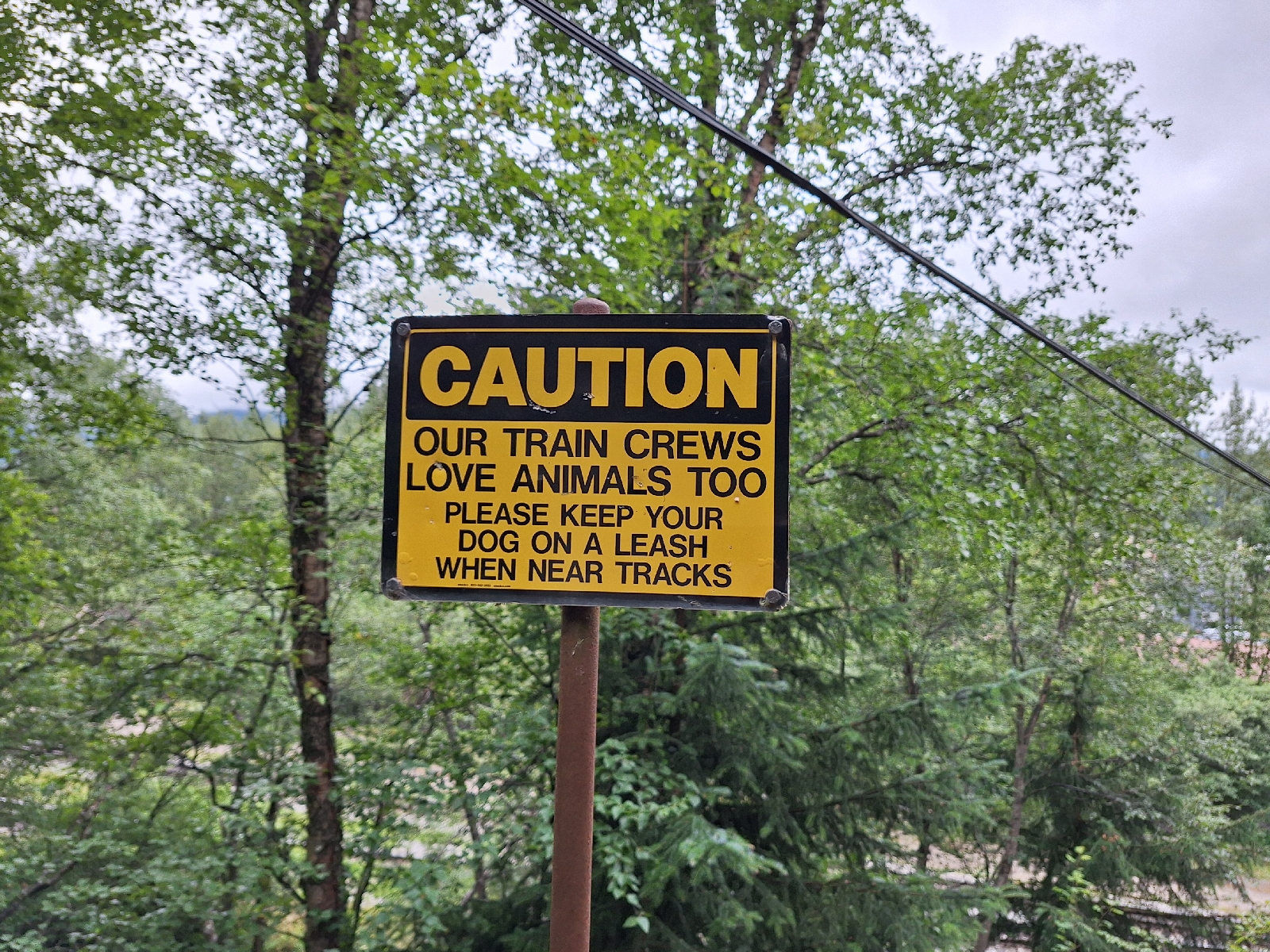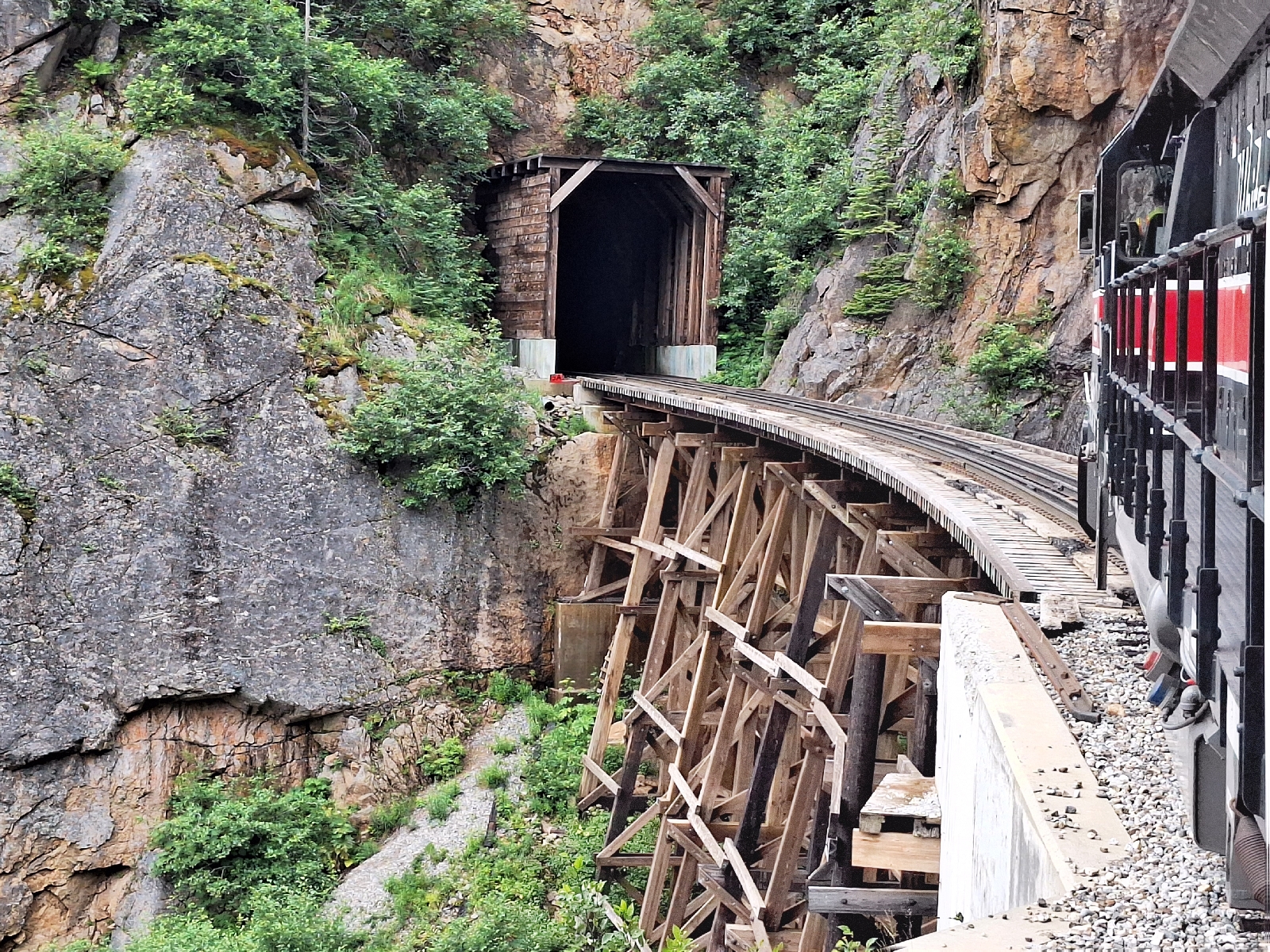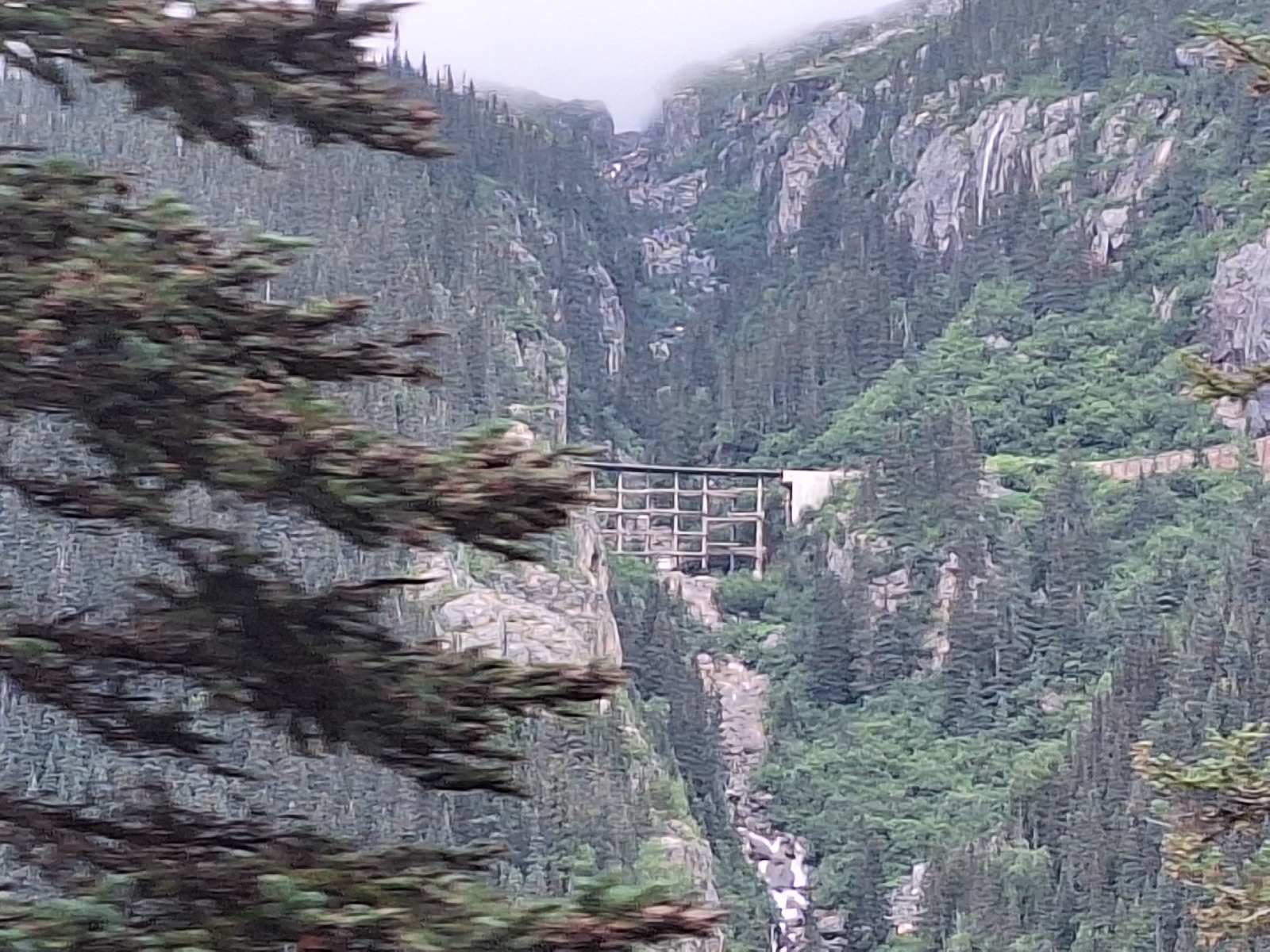About an hour up the valley from Canmore in Banff National Park lies Lake Louise. The air had a thin layer of smoke from the Jasper fires, which we could smell (1). The lake itself sits about 800 feet above the small town of the same name. The Parks Canada buses to the lake were sold out for the day (1). We knew of a trail from the town to the lake, but parking is limited to 2 hours. The info booth told us that we could park at the ski area (where everybody parks). Then, instead of the $30 sold-out shuttle to the lake, we could hop on the free shuttle to town, then hike up.
Arriving at the parking lot, there were crowds of people, so we scampered to the shuttle to town. There was only one other person on the shuttle; the crowds of people were going for the various paid shuttles to the lake (2).
The hike up following the Louise Brook was lovely (3), with the brook running vigorously down the narrow valley. Unlike the dry riverbeds we encountered yesterday, the lake and outlet brook are fed by glaciers melting on this warm day. The trail was very well-maintained, less than 2 miles long and less than 800 foot elevation gain. We encountered few other people on the trail. Arriving at the Lake, an endless stream of buses (4) disgorged a surfeit of passengers, with upwards of 15,000 visitors a day to the Lake (5).
Canoe rentals were on offer, so we enjoyed a paddle around the lake on this windless day. The lake water was icy cold and had that pale green color that signals glacial melt.
The fancy mountain hotel at Lake Louise was built by the Canadian Pacific Railway to encourage people to ride their trains here. The hotel had been connected to the mainline in the village via a tram. Our hopes for a meal at the hotel were dashed by the closed dining room, but coffee and snacks were available. A mile hike further up brought us to a viewpoint high above the lake.
Hiking back down the Louise Brook Trail, we encountered even fewer people than this morning (6). The Canadian Pacific Railway station has been converted to a restaurant where we had dinner. Upon entering, I asked the hostess when the trains go by. "All day, every day" was her reply.
The continental divide at Kicking Horse Pass was less than 10 miles away, so we crossed over to B.C., where the waters flow west to the Pacific, rather than into the Atlantic at Hudson Bay (7).
Heading back to Canmore, we opted for the Park's Bow River Parkway, rather than the TransCanada highway. I'm glad we did; a grizzly was on the side of the road chomping on grass and daisies, completely indifferent to the screeching of the long train climbing the pass behind him.
(1) We chatted with a bus driver later about the limited visibility. "This isn't bad, 4 years ago, you couldn't see any of the surrounding mountains for 2 months." He replied.
(2) Parks Canada strongly recommends "advanced planning" to visit the Lake. We had not.
(3) The official park trail map we picked labeled the Louise Brook Trail #3. In a touch of whimsy, the trail maps posted in the woods did not show the Louise Brook Trail at all, and labeled a different trail as #3. Nevertheless, the trail was easy to follow, and the fingerposts accurately guided the way.
(4) From Parks Canada, the local public transit agency, and a wide variety of private concessionaires.
(5) Trying to cross the street at the bus parking lot was a challenge. We were scolded by a park employee for not using the crosswalk, which somehow we were supposed to know the location of, even though it wasn't marked due to construction. She emphatically pointed at the non-existent crosswalk.
(6) Riding the town shuttle up from town to the parking lot, we chatted with the one other passenger, a local who recommends the short hike to the lake, but says people get mad at him for doing so. Fewer paying passengers on the lake shuttle, I presume.
(7) A Condition of British Columbia joining Canada was the building of railway from Eastern Canada. Many years ago, I read Pierre Berton's Impossible Railway, and remember Kicking Horse pass as being a formidable challenge. From the east, the Bow River Valley to the Pass provides easy grades and seemed anticlimactic. A quick glance at the map, however shows spiralling loops and tunnels on the west side of the pass, suggesting steep grades and challenging terrain.
Crossing the bow river at the trailhead
Someone put a hula hoop on the ped xing sign
Following the Louise Brook
Paddling on the lake
Looking up at the glaciers feeding the Lake
A helicopter made frequent runs to drop supplies at the top of this ridge for the Agnes Lake Teahouse




